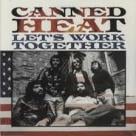The handful of midstream companies that provide a full range of “wellhead-to-water” services between the Permian and the Gulf Coast are in growth mode, advancing a long list of gas processing plants, takeaway pipelines, fractionators and export terminal expansions. Last time we looked at what Enterprise Products Partners and Energy Transfer are up to. In today’s RBN blog, we shift our spotlight to what Targa Resources and Phillips 66 are planning, with Targa building a slew of projects and P66 growing primarily through organic opportunities that have arisen following recent bolt-on M&A.
Natural Gas Liquids
More than 9 billion gallons of propane were delivered to U.S. consumer markets in 2024, primarily for residential heating and cooking. The final step in propane’s pathway to the retail market is managed by a large group of companies known as retailers, which range in size from “mom and pop” operations that run only a couple of cars serving a local market to companies with fleets of cars and multiple supply points. As we detail in today’s RBN blog, the propane business requires a huge focus on logistics and personal relationships.
In their first earnings calls of 2025, the handful of large midstream companies that provide the gamut of “wellhead-to-water” services in Texas laid out plans for yet another round of projects — everything from gas processing plants and takeaway pipelines to fractionators and export terminal expansions. At the same time, many of these same midstreamers expressed a degree of caution about overbuilding. They sought to reassure Wall Street that they were only approving plans underpinned by strong commercial support. In today’s RBN blog, we discuss the latest capital spending plans of this select, upper tier of midstream service providers.
The decision by the U.S.’s largest independent propane wholesaler to exit the business serves as a reminder of the challenges and risks that companies like it face. The move also highlights the fact that at least some other independent wholesalers — including the presumed buyer of NGL Energy Partners’ propane-related assets — believe that by increasing their scale and scope they can compete more effectively with their two classes of competitors: affiliates of big midstream companies and affiliates of propane retailers. In today’s RBN blog, we discuss what the latest M&A activity in the propane space reveals.
It finally happened. And it’s a very big deal for MPLX and ONEOK, both of which have been working for years to become full-fledged members of the elite “NGL wellhead-to-water club.” But the companies’ announcements that MPLX will build two fractionators at the terminus of a new NGL pipeline from Sweeny to Texas City and that ONEOK and MPLX will joint build a new LPG export terminal nearby (and a new purity-product pipeline between Mont Belvieu and the terminal) doesn’t just fill in the missing pieces of the puzzle they’ve been assembling. The plans also will give Gulf Coast LPG exporters the additional capacity they desperately need and — no small thing — create another fractionation hub. In today’s RBN blog, we discuss what MPLX and ONEOK are planning and why it matters.
It finally happened. And it’s a very big deal for MPLX and ONEOK, both of which have been working for years to become full-fledged members of the elite “NGL wellhead-to-water club.” But the companies’ announcements that MPLX will build two fractionators at the terminus of a new NGL pipeline from Sweeny to Texas City and that ONEOK and MPLX will joint build a new LPG export terminal nearby (and a new purity-product pipeline between Mont Belvieu and the terminal) doesn’t just fill in the missing pieces of the puzzle they’ve been assembling. The plans also will give Gulf Coast LPG exporters the additional capacity they desperately need and — no small thing — create another fractionation hub. In today’s RBN blog, we discuss what MPLX and ONEOK are planning and why it matters.
The domestic U.S. propane market annually accounts for roughly 9 billion gallons of demand. The pathway from the wellhead to an end user is complex, involving pipelines, railcars, trucks and tankers, and wholesalers are essential in moving all that propane from fractionators and refineries to propane terminals. A wide variety of players fulfill this role, from large publicly traded companies to smaller private ones, but as we detail in today’s RBN blog, they all do one thing — move propane one step closer to its retail destination.
At first glance, you might think that Phillips 66’s newly announced, $2.2 billion plan to acquire the EPIC NGL pipeline system, two fractionators near Corpus Christi and other NGL-related assets in Texas is just another logical step in the expansion of P66’s “well-to-market” NGL strategy — and you’d be right. But the story is actually much more interesting, involving a long list of well-known midstream players and a long-running, still-evolving effort to dilute the Mont Belvieu NGL hub’s dominance. In today’s RBN blog, we spill the tea.
In 2024, more than 9 billion gallons of propane were delivered to U.S. consumer markets, primarily for residential heating and cooking, with substantial volumes supporting the commercial, industrial, agricultural and transportation sectors. It is a physically complicated business because, unlike electricity and natural gas, which are delivered through wires and pipelines, respectively, the vast majority of the propane used by U.S. consumers is delivered by some combination of pipelines, rail cars and, ultimately, trucks. How does that complicated supply chain work in real life? In today’s RBN blog, we begin a detailed look at the U.S. propane market.
LPG and ethane exports out of the U.S. continue to grow rapidly and are expected to reach 3.4 MMb/d by 2030. They are also critical parts of a plan by Enterprise Products Partners to expand its total liquid hydrocarbon exports to 100 MMbbl per month (100 MMb/month), a roughly 50% increase from current levels for crude oil, LPG and ethane, refined products and petchems. In today’s RBN blog, we’ll take a closer look at Enterprise’s LPG and ethane exports and how much they need to grow to reach the company’s ambitious goal.
Exactly the same product. Exactly the same day. In storage very nearby. Yet their prices diverged by 17 cents per gallon — a spread equivalent to $7 per barrel. That’s a very substantial difference for prices that typically are almost indistinguishable, differing by an average of only 0.3% in recent years. The disparity roiled the financial underpinnings of exports for over a month and busted numerous inventory hedges. Is this some rare commodity? Hardly. It’s Mont Belvieu propane, the Rock of Gibraltar benchmark propane price in the U.S., and to a great extent around the world. But during October there was a crack in that rock a mile wide.
Exactly the same product. Exactly the same day. In storage very nearby. Yet their prices diverged by 17 cents per gallon — a spread equivalent to $7 per barrel. That’s a very substantial difference for prices that typically are almost indistinguishable, differing by an average of only 0.3% in recent years. The disparity roiled the financial underpinnings of exports for over a month and busted numerous inventory hedges. Is this some rare commodity? Hardly. It’s Mont Belvieu propane, the Rock of Gibraltar benchmark propane price in the U.S., and to a great extent around the world. But during October there was a crack in that rock a mile wide.
A slew of LPG, ethane and ethylene export projects are underway along the Gulf Coast, a direct result of rising U.S. NGL production and generally flat domestic demand. Three of the projects will provide “flex” capacity of some sort — that is, the facilities will be able to shift between LPG and ethane exports or, in some cases, between ethane and ethylene. In today’s RBN blog, we review the history of U.S. LPG and ethane exports, why midstreamers have been struggling to keep up with export capacity, and how the ongoing addition of flex capacity is likely to play out.
The Gulf Coast is the engine of U.S. energy markets and its fiercely competitive. Over the past decade, monumental growth of crude oil and NGL production, predominantly from the Permian Basin, has led to a surge in exports, with more than 90% of these liquids departing from marine terminals along the Texas and Louisiana coasts. To facilitate that growth, the region has also experienced a tremendous buildout of gathering systems, pipelines, processing facilities, and especially export docks. Major Gulf Coast market regions like Corpus Christi, Houston, Beaumont, Lake Charles and Baton Rouge all have unique advantages and disadvantages. And the companies that operate in those regions have strategic motivations for where they would like to see new volumes go. As the Gulf Coast energy sector presses on to a new horizon, competition for market share among major players is intense, impacting producers, midstream operators, downstream consumers and exporters alike. That was the focus of our recent NACON: PADD 3 conference and it’s the subject of today’s RBN blog.
Shell’s petrochemical complex in Western Pennsylvania has had plenty of challenges on its way to startup and full operation. Announced a dozen years ago, the project was set back by COVID-related construction delays and a rougher-than-expected production ramp-up. But that’s all in the past now (fingers crossed) and the ethane-rich Northeast finally has its first big ethylene plant. In today’s RBN blog, we’ll examine Shell’s return to plastics and what it took to get there.















